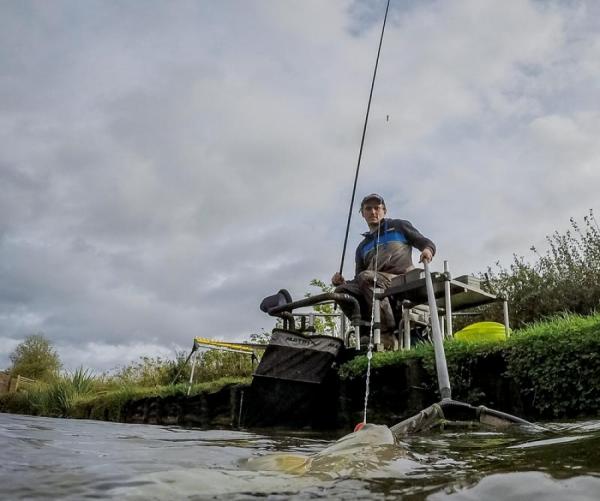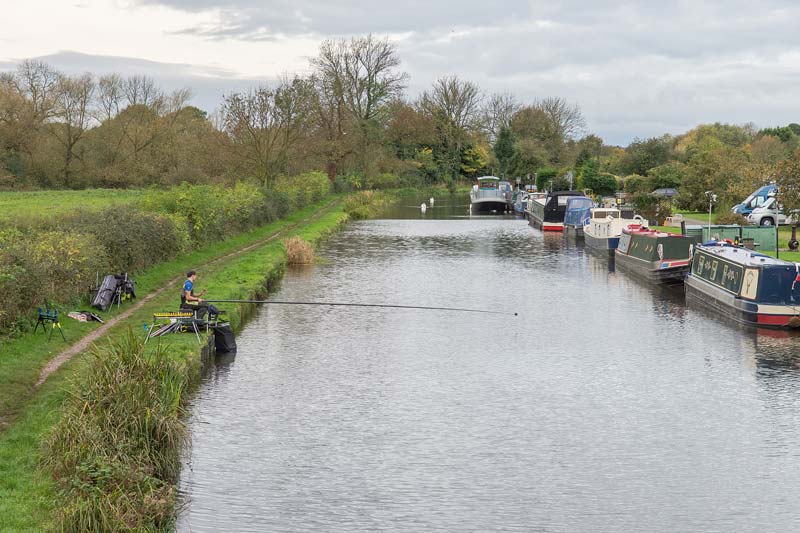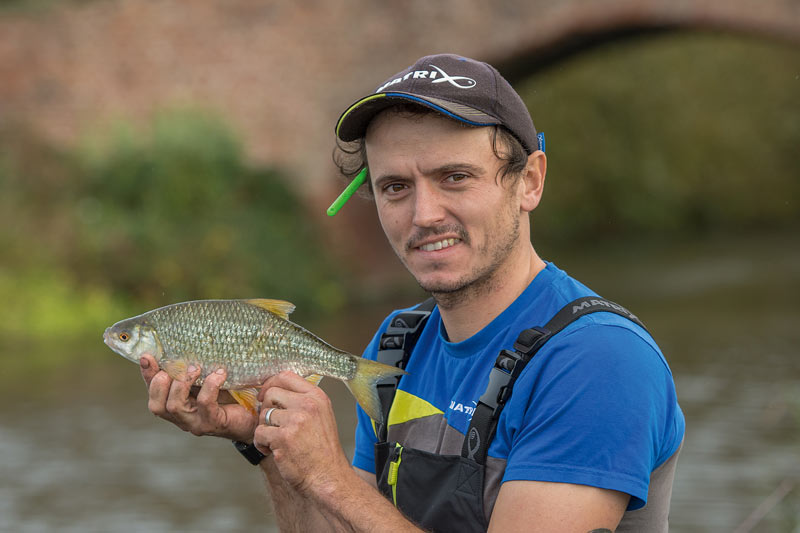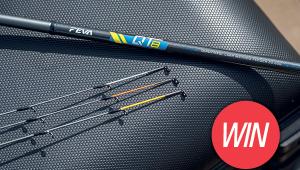Matrix Masterclass Feed ‘em And Leave ‘em

Feed ‘em and leave ‘em
Putting together a match-winning catch on a canal is not easy, although there are some anglers that make the most difficult things look simple. Lee Wright is one of those anglers and we joined him to find out just what he does that makes building a big catch look effortless.
Something I’ve always found on canals is that if you can keep catching fish you’ll rarely be far away from the main frame. This may sound a bit obvious, but one thing I see far too many anglers doing is sitting on a swim waiting for something to happen. I know we all have to wait for bites, but knowing just how long to give a swim and how to maximise your catching time is the way to achieve success.
Don’t Keep It Simple
Despite what is often said, when it comes to getting the best from a canal a simple approach will rarely maximise the true potential of your peg. With most canals in the UK being shallow, narrow and clear the fish will rarely settle in one area for long, especially when a few get caught. This rules out the simple approach and requires an angler to work hard and rotate swims to keep the fish dropping into the net.
Although I wouldn’t call the way I tackle a canal simple, I do think it’s very methodical, which does make it easy to understand and execute. The first thing to understand is where the fish will be: the bottom of the near shelf, the bottom of the far shelf and up the far shelf are always the go-to areas on most pegs and you’ll always be able to catch fish by targeting these key areas.

As the fish will always back off from any bankside pressure I only feed one swim at the bottom of the near shelf; I will then usually feed two at the bottom of the far shelf and two up the shelf where the water is shallower. The key to putting a match-winning weight together is to never totally exhaust a swim and always give yourself a chance to go back and pick up a few more fish.
Be Different
It’s impossible to know how fish are going to feed; even if you know a venue well no two days are ever the same. I like to keep this in mind when feeding my swims to ensure that I’m not putting all my eggs in one basket, either with an all-out positive approach or an approach that is too negative.
By mixing it up, if the fish do want to have a feed they have somewhere to get their heads down, but if they’re not in the mood I have options to cover it.
The inside line is always my starting point. I’m looking for an instant run of fish so I won’t feed loads of bait at the start, as that’s a tactic that lends itself to waiting for fish to settle. I usually feed one ball on this line and then top it up as bites dictate. I will also feed squatts on this line, which helps to keep the fish searching for bait.
At the bottom of the far shelf I’ll feed two swims: one will be positive and what I will consider to be my main line for the day, and the other will be fed with less bait but with a few more casters and a little worm, so this can either be a negative squatt line or somewhere to pick up the odd bigger skimmer.
The same applies to my far lines, these are more aimed towards catching a better stamp of fish but again I’ll give myself a couple of options. One will be fed with groundbait for any bigger skimmers or roach that are about and the other with a small amount of worm and caster for any bonus fish that are interested. This line isn’t fed with huge amounts as it can also double up as a line to scratch out a few small perch if it turns out to be a really hard session.
While on the subject of how I feed my lines I think it’s also worth mentioning my mix. I won’t go into detail on the exact mix I use as everyone has their own preferences but what I do think I need to mention is how I like my mixes to behave.
I mix my groundbait on the dry side and riddle it through a fine pinkie riddle to make sure it’s fluffy and holds plenty of air. This ensures that each ball hangs on the surface briefly when it’s cupped in and slowly sinks down to the bottom. As the balls aren’t heavy they will sit just on the silt and break down very quickly. The one tip I will give though, is to make sure the canal isn’t pulling off as you cup your balls in, as this can pull them away from the area you intend to feed.

When I mix my groundbait I separate around a third into another bowl and I then overwet this to give me a sticky ‘claggy’ consistency, and add squatts and pinkies to it. This is the mix I will use to top up my squatt lines as it breaks down quite slowly, releases a bit of a cloud on the way down and gives the fish something to pick at, which I’m sure keeps them looking for food for longer.
Keep It Light
To build up a match-winning weight you have to fish light. I can guarantee that if you fish as light as possible not only will you catch more fish but you’ll also catch a better stamp of fish.
For my squatt and caster lines I’ll fish 0.08mm Matrix Power Micron to a 0.07mm hooklength. Floats are kept light as well, with 4x10 and 4x12 being my preferred choice if conditions allow and these are shotted with No13s or No12s strung out to give a slow, natural fall. Even if conditions aren’t ideal I prefer to lay a little line on the bottom, up to six inches, rather than fish a heavier float.
The only ‘positive’ rig I set up will be a 4x12 on 0.10mm to 0.08mm. It has a bulk and two droppers and this will be for fishing over my worm line. Hook choice is a size 20 Matrix All Round on all rigs, and to keep things balanced I use light No2 or No3 solid elastic.
Feed Them And Leave Them
As I’m talking about building up a match-winning weight I won’t go into specifics about how to feed each line throughout the session as venues vary, and what has worked for me today may not work tomorrow, let alone on another canal. This feature is more about the methodology behind the tactics.
As I said, I always start short and I’ll catch here until I feel the swim is starting to fade. I will then top up this swim and move on to my main squatt line, where I hope to continue to regularly put fish in the net. Once this swim starts to fade, again I will feed it and then move onto my negative squatt line, but with a bigger bait like a maggot, looking for a bigger fish. If I catch one I will feed this line and again move on to another swim, where if I don’t have a bite after a couple of minutes I’ll try a squatt or pinkie and look to see if any smaller fish are there.
At this point I’ll possibly be an hour into the match, and at this stage I don’t want to rush on to my far lines so I’ll switch back close and again pick up a few fish before moving back on to the swims at the bottom of the shelf. It’s a continuous process of catching a few fish, but not too many, feeding them to let them regroup then moving swims.
At the halfway stage in the match I will then introduce my far-side groundbait swim into this rotation. By adding another line at this stage it should keep the other lines going a bit longer as the time between catching fish on them is greater. This should buy me another half an hour to an hour and then I’ll introduce the final line, the worm line across.
At this point the close in swim will possibly be dead, but if you’ve nurtured it and caught on it for three to four hours you’ve done a brilliant job. Usually though, it’s a case of swapping between the four lines across, picking up squatt fish off a couple and hopefully nicking the odd bigger roach, perch or skimmer off the others.
I know by now you’re probably dizzy, but this routine of catching, feeding and moving really does work and on the right day you can put fish of all sizes in the net with alarming regularity.
It’s certainly not for the faint-hearted; it takes effort and it’s not a style of fishing that you’ll master the first time you go out. If you keep it in your mind though, and try to apply the principles to your own fishing then you’ll find that when you do get on a peg with match-winning potential you will capitalise, and winning becomes easy.

- Log in or register to post comments












